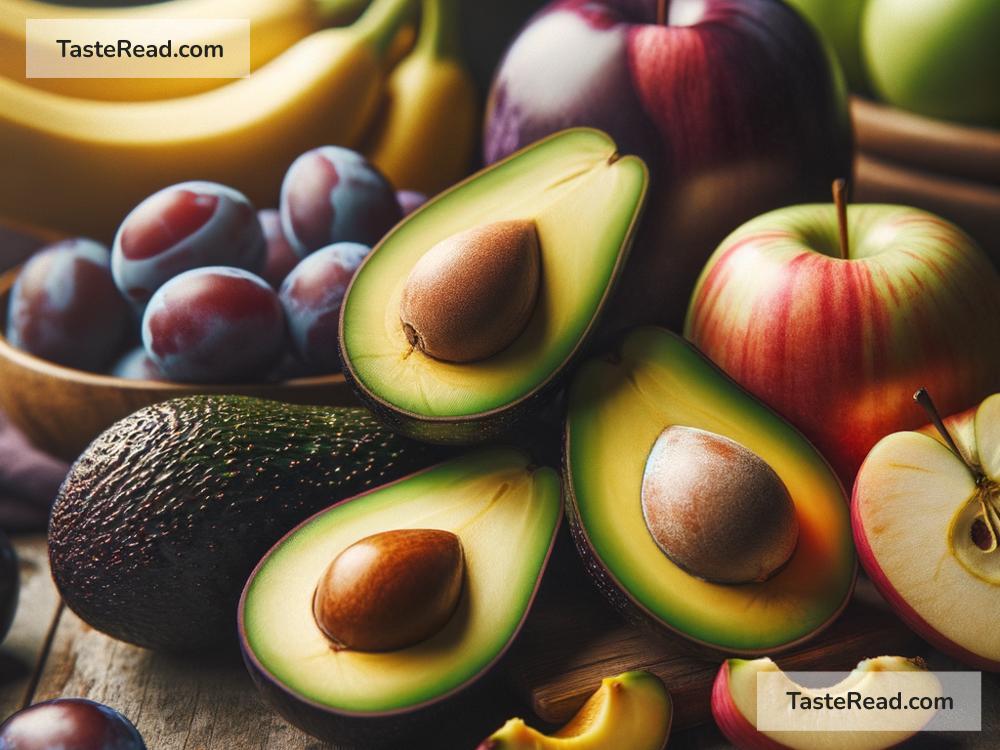How the Thickness of Fruit Skin Affects Taste
Fruits are one of nature’s sweetest gifts to us. They come in all shapes, sizes, and flavors, offering both nutrition and enjoyment. But have you ever wondered why some fruits taste sweeter than others, or why your favorite fruit has a unique texture and flavor? One important factor that often goes unnoticed is the thickness of the fruit’s skin. Believe it or not, the skin plays a big role in how a fruit tastes! In this article, we’ll dive into the relationship between fruit skin thickness and flavor, all in simple and easy-to-understand language.
What Is Fruit Skin?
Fruit skin is the outer layer of a fruit, called the “peel” in many cases. It acts as a protective shield for the fruit, keeping it safe from pests, weather damage, and infections. Think of it as a fruit’s armor! Different fruits have different types of skins. Some are thin and edible, like apple and grape skins, while others are thick and tough, like the peels of bananas, oranges, or watermelons. The skin’s thickness, texture, and chemical composition vary depending on the type of fruit. These differences are key to how the fruit tastes.
How Skin Thickness Impacts Sweetness
One major way fruit skin affects taste is by influencing its sweetness. Fruits with thinner skins, such as cherries, grapes, and strawberries, often have a more intense sweetness that is easily noticeable when you bite into them. This is because thin skins allow the flesh underneath to ripen evenly and concentrate sugars. Additionally, when fruit skins are thin, they barely add anything to the taste, letting the natural flavors of the fruit stand out.
On the other hand, fruits with thicker skins, such as pineapples, coconuts, and melons, may have sweetness hidden deeper within. Their tough outer layer can sometimes mask the flavor, especially if you’re eating a part of the fruit close to the skin (which tends to be less sweet). People usually remove thick skin, which makes it harder to directly taste the fruit in its entirety.
Skin Thickness and Bitterness
Sometimes, thick fruit skins can bring a bitter or tangy flavor to the mix. For example, the white inner layer of an orange peel (known as the pith) is often bitter, and that bitterness can affect the way we experience the fruit’s sweetness. Similarly, fruits like lemons and grapefruits have relatively thick skins that contain compounds such as oils and tannins. These compounds can add extra flavors that many people associate with tartness or bitterness.
Thinner fruit skins, on the other hand, usually do not have as much bitterness because their chemical composition is simpler. For example, you can eat the skin of a peach or plum comfortably without worrying too much about bitterness. The thin, sweet, and sometimes slightly tangy skin enhances the overall flavor of the fruit rather than overpowering it.
The Role of Texture in Taste
Skin thickness also affects the texture of fruit, which plays a big part in how we experience its taste. Fruits with delicate, thin skins, like raspberries and blueberries, feel soft and smooth when you eat them. This soft texture can make the fruit taste juicier and more refreshing.
Meanwhile, fruits with thicker skins tend to feel tougher or firmer. For example, biting into an apple with its thin skin is a very different experience compared to removing the thick peel of a mango or pineapple. The skin’s texture can influence whether you think of a fruit as crunchy, creamy, or chewy, and all of these details play into your perception of its taste.
Nutritional Impact of Skin
Interestingly, fruit skin isn’t just there for taste and texture—it’s also packed with nutrients! Some thin fruit skins, like apple skin, are full of fiber, vitamins, and antioxidants. These nutrients can make the fruit taste fresher and add a subtle earthy nuance.
Thicker fruit skins, however, often don’t get eaten. While they may be nutritious (think of orange zest or watermelon rinds), they are usually discarded because of their tough texture and strong flavors. Still, these skins help the fruit stay protected and ensure its flesh stays sweet and flavorful.
Skin Thickness: Nature’s Packaging
Another reason why skin thickness affects fruit taste has to do with ripeness. Thinner-skinned fruits tend to ripen faster because they are more exposed to the environment. This faster ripening process can lead to a sweeter taste. Thicker-skinned fruits, however, ripen more slowly because their tough outer layer acts as a barrier. This can make their flavor more subtle initially but more complex over time.
Nature designs fruit based on where it grows and how it needs to be protected. Fruits with thinner skins often grow in safer environments where predators and weather are less of a concern. Meanwhile, fruits with thicker skins usually grow in places where they need extra protection. This natural packaging affects not just the fruit’s survival but also the way it looks, feels, and tastes!
Final Thoughts
So, does the thickness of fruit skin really affect taste? Absolutely! Thin skins often lead to sweeter and juicier fruits with delicate textures. Thick skins tend to create fruits with deeper, subtler flavors that develop over time, often paired with tougher textures or hints of bitterness.
Whether you prefer the bright sweetness of a thin-skinned fruit like a grape or the complex richness of a thick-skinned fruit like a mango, remember that the skin is more than just a wrapper—it’s an important part of the fruit’s identity. So next time you enjoy your favorite fruit, take a moment to appreciate how its skin plays a role in the delicious flavors you love!


